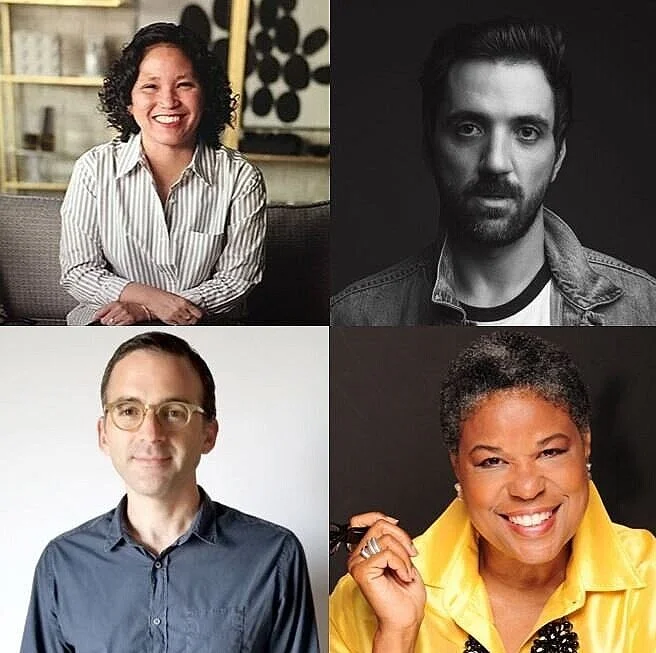Handmade Futures Summit 2020 Recap - Designing for Tomorrow
Clockwise from top left: Bingka Leung, Diego Olivero, Patti Carpenter, and Jeff Hannoosh
In 2020, Trade+Impact, in partnership with Williams Sonoma Inc., hosted the inaugural Handmade Futures Summit. As we prepare for the second summit in September, it is helpful to look back and reflect on some of the key learning from last year’s summit. Today’s blog recaps the panel workshop “Designing for Tomorrow” that was presented by Bingka Leung and Jeff Hannoosh from West Elm, Diego Olivero from Meso Goods (and West Elm), and Patti Carpenter of carpenter + company.
Product Development
One of the most important things artisan businesses need to understand is the product development and concept design cycle for buyers. Bingka Leung introduced concept design, explaining how buyers start with a concept which defines the look and feel of a season’s offerings. Leung highlighted that concept can come from anywhere, including but not limited to geography and culture.
Once a concept is created, buyers shift to their assortment needs process where they explore how they will fill their line for a season. Assortment needs are filled either through internal design, where buyers initiate the design of product with certain specifications, or through vendor submissions. In both instances buyers work with partner vendors to modify and finalize the design of the product. While discussing this, Jeff Hannoosh talked about the importance of partnerships in the product development process. Hannoosh highlighted, “the importance of connecting with retailers who you feel share your values and your product is a good fit for.” In doing so, it allows for greater collaboration between buyers and producers he explained.
Impact
Diego Olivero highlighted a number of sample projects that demonstrate the impact of artisan product on communities around the world. He explained how impact is driven by the intersection of cultural celebration and innovation. Cultural celebration ensures that traditional artisan techniques are preserved while innovation pushes these techniques forward to meet broader consumer needs. In doing so, artisans can increase the impact that their businesses can have on their communities, especially by initiating local economic development.
Components of Creating a Product Line
Finally, it is not enough for artisan businesses to have one or two products available. It is essential for artisans to develop broader product lines, which can be created through innovation along a number of a parameters. Patti Carpenter outlined these parameters and explained how tweaks along any of these can bring new life to products and achieve broader success, while also respecting and maintaining the cultural integrity of product.
These parameters are: form, size, colour, pattern, texture, price, and story.
Carpenter particularly emphasized story. Creating and illustrating this story demonstrates the authenticity of the product, which ultimately drives the connection between artisan and consumer and is able to convey shared global values, like sustainability.
In summary, the “Designing for Tomorrow” workshop explored important topics in the creation of artisanal product. Throughout the entire workshop, the panelists highlighted some of the ways that producers can build on traditional artisanal techniques and processes to reach wider markets. In doing so, artisan producers can bring these traditionally-inspired products to the world while ensuring their organizations have a significant positive impact at home in their local communities.
*All information above was cited from “HFS 2020 Session 3: Designing for Tomorrow,” presented by Bingka Leung, Jeff Hannoosh, Diego Olivero, and Patti Carpenter at the Handmade Futures Summit 2020 put on by Trade+Impact Association. The presentation originally took place September 23, 2020 and was reviewed in video format (1:16:05) through a private YouTube video posted by Trade+Impact Association.

